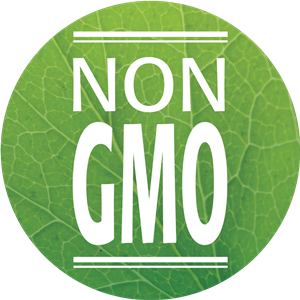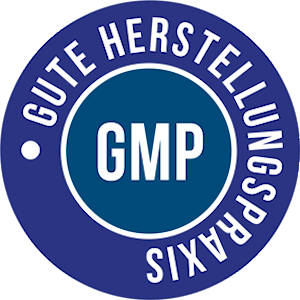

Hinter den geheimnisvoll klingenden Namen Tribulus terrestris, Gokshura oder Erdstachelnuss verbirgt sich eine krautige Pflanze, die in den (sub)tropischen Gebieten von China über Ost- und Westasien bis nach Südeuropa verbreitet ist. Neue Studien bestätigen viele ihrer traditionell bekannten Heilwirkungen.
So wurden die Früchte dieser vielseitigen Pflanze in der traditionellen chinesischen Medizin zur Behandlung von Augenproblemen, Ödemen, hohem Blutdruck und Herz-Kreislauf-Erkrankungen eingesetzt, während sie in der ayurvedischen Medizin u.a. zur Behandlung von Impotenz, Appetitlosigkeit, Gelbsucht, urogenitalen Beschwerden und Herz-Kreislauf-Erkrankungen genutzt wurde.(1-4)
Traditionell wurde Tribulus terrestris zur Behandlung von Impotenzproblemen des Mannes eingesetzt und verschiedene Studien haben seine Wirksamkeit im Hinblick auf die Verbesserung der Erektion bei Männern mit erektiler Dysfunktion belegt.(5-8) Bei gesunden Männern wird das Testosteron durch die Verabreichung von Tribulus terrestris nicht beeinflusst (7-10)
Bei Frauen mit sexueller Dysfunktion steigert Tribulus terrestris die Libido und die sexuelle Befriedigung, dies zeigte sich durch verbesserte Werte im Weiblichen Sexuellen Funktionsindex (FSFI) bei Frauen vor und nach der Menopause. (11-14)
Tribulus terrestris werden darüber hinaus positive Wirkungen auf den Harntrakt beigemessen. Bei Patienten mit erhöhtem Blutdruck im Zusammenhang mit Wassereinlagerungen wirkt es diuretisch und antihypertensiv (15), es unterstützt die Eliminierung von Nierensteinen(16-17) und fördert die Vorbeugung von Prostatakrebs und gutartiger Prostatavergrößerung.(18-19)
Bei Frauen mit Diabetes mellitus Typ 2 wurden bedeutende Verbesserungen hinsichtlich des Blutzuckers, des Gesamtcholesterins und des LDL-C festgestellt.(20-21)
Tribulus terrestris kann desweiteren durch seine cardioprotektive Wirkung bei Myokardischämie (22) und Atherosklerose zur Linderung der Symptome von Herzkreislauferkrankungen beitragen und gefäßschützend wirken. (23,24)
Haftungsausschluss: Die in diesem Artikel dargestellten Informationen sind nur für allgemeine Informationszwecke bestimmt und stellen keine medizinische Beratung dar.
Literaturangabe:
1) Sharma, J., Gairola, S., Gaur, R. D., & Painuli, R. M. (2012). The treatment of jaundice with medicinal plants in indigenous communities of the Sub-Himalayan region of Uttarakhand, India. Journal of ethnopharmacology, 143(1), 262-291. 2) Xu, Y. J., Xu, T. H., Zhou, H. O., Li, B., Xie, S. X., Si, Y. S., ... & Xu, D. M. (2010). Two new furostanol saponins from Tribulus terrestris. Journal of Asian natural products research, 12(5), 349-354. 3) Kumar, A., & Verma, N. (2012). A comparative phylogenetic analysis of medicinal plant Tribulus terrestris in Northwest India revealed by RAPD and ISSR markers. Biodiversitas Journal of Biological Diversity, 13(3). 4) Mutheeswaran, S., Pandikumar, P., Chellappandian, M., & Ignacimuthu, S. (2011). Documentation and quantitative analysis of the local knowledge on medicinal plants among traditional Siddha healers in Virudhunagar district of Tamil Nadu, India. Journal of Ethnopharmacology, 137(1), 523-533. 5) Sellandi, T. M., Thakar, A. B., & Baghel, M. S. (2012). Clinical study of Tribulus terrestris Linn. in Oligozoospermia: A double blind study. Ayu, 33(3), 356. 6) GamalEl Din, S. F., Abdel Salam, M. A., Mohamed, M. S., Ahmed, A. R., Motawaa, A. T., Saadeldin, O. A., & Elnabarway, R. R. (2019). Tribulus terrestris versus placebo in the treatment of erectile dysfunction and lower urinary tract symptoms in patients with late-onset hypogonadism: A placebo-controlled study. Urologia Journal, 86(2), 74-78. 7) Roaiah, M. F., El Khayat, Y. I., GamalEl Din, S. F., & Abd El Salam, M. A. (2016). Pilot study on the effect of botanical medicine (Tribulus terrestris) on serum testosterone level and erectile function in aging males with partial androgen deficiency (PADAM). Journal of sex & marital therapy, 42(4), 297-301. 8) Kamenov, Z., Fileva, S., Kalinov, K., & Jannini, E. A. (2017). Evaluation of the efficacy and safety of Tribulus terrestris in male sexual dysfunction—a prospective, randomized, double-blind, placebo-controlled clinical trial. Maturitas, 99, 20-26. 9) Neychev, V. K., & Mitev, V. I. (2005). The aphrodisiac herb Tribulus terrestris does not influence the androgen production in young men. Journal of ethnopharmacology, 101(1-3), 319-323. 10) Roaiah, M. F., Elkhayat, Y. I., Saleh, S. F. G. D., & Abd El Salam, M. A. (2017). Prospective analysis on the effect of botanical medicine (Tribulus terrestris) on Serum testosterone level and semen parameters in males with unexplained infertility. Journal of dietary supplements, 14(1), 25-31. 11) de Souza, K. Z. D., Vale, F. B. C., & Geber, S. (2016). Efficacy of Tribulus terrestris for the treatment of hypoactive sexual desire disorder in postmenopausal women: a randomized, double-blinded, placebo-controlled trial. Menopause, 23(11), 1252-1256. 12) Gama, C. R., Lasmar, R., Gama, G. F., Abreu, C. S., Nunes, C. P., Geller, M., ... & Santos, A. (2014). Clinical assessment of Tribulus terrestris extract in the treatment of female sexual dysfunction. Clinical Medicine Insights: Women's Health, 7, CMWH-S17853. 13) Akhtari, E., Raisi, F., Keshavarz, M., Hosseini, H., Sohrabvand, F., Bioos, S., ... & Ghobadi, A. (2014). Tribulus terrestris for treatment of sexual dysfunction in women: randomized double-blind placebo-controlled study. DARU Journal of Pharmaceutical Sciences, 22(1), 40. 14) Vale, F. B. C., Zanolla Dias de Souza, K., Rezende, C. R., & Geber, S. (2018). Efficacy of Tribulus Terrestris for the treatment of premenopausal women with hypoactive sexual desire disorder: a randomized double-blinded, placebo-controlled trial. Gynecological Endocrinology, 34(5), 442-445. 15) Murthy, A. R., Dubey, S. D., & Tripathi, K. (2000). Anti-hypertensive effect of Gokshura (Tribulus terrestris Linn.)-A clinical study. Ancient science of life, 19(3-4), 139-145. 16) Al-Ali, M., Wahbi, S., Twaij, H., & Al-Badr, A. (2003). Tribulus terrestris: preliminary study of its diuretic and contractile effects and comparison with Zea mays. Journal of Ethnopharmacology, 85(2-3), 257-260. 17) Aggarwal, A., Tandon, S., Kumar Singla, S., & Tandon, C. (2012). A novel antilithiatic protein from Tribulus terrestris having cytoprotective potency. Protein and peptide letters, 19(8), 812-819. 18) Wei, S., Fukuhara, H., Chen, G., Kawada, C., Kurabayashi, A., Furihata, M., ... & Shuin, T. (2014). Terrestrosin D, a steroidal saponin from Tribulus terrestris L., inhibits growth and angiogenesis of human prostate cancer in vitro and in vivo. Pathobiology, 81(3), 123-132. 19) Sengupta, G., Hazra, A., Kundu, A., & Ghosh, A. (2011). Comparison of Murraya koenigii–and Tribulus terrestris–based oral formulation versus tamsulosin in the treatment of benign prostatic hyperplasia in men aged> 50 years: a double-blind, double-dummy, randomized controlled trial. Clinical therapeutics, 33(12), 1943-1952. 20) Samani, N. B., Jokar, A., Soveid, M., Heydari, M., & Mosavat, S. H. (2016). Efficacy of the hydroalcoholic extract of Tribulus terrestris on the serum glucose and lipid profile of women with diabetes mellitus: A double-blind randomized placebo-controlled clinical trial. Journal of evidence-based complementary & alternative medicine, 21(4), NP91-NP97. 21) Zhang, S. J., & Feng, S. C. (2012). Effects of saponins from Tribulus terrestris on postprandial blood glucose levels in normal and type 2 diabetic rats. Pract Pharm Clin Remed, 15(1), 1-3. 22) Zhang, Y. G., Song, H. Y., Li, Y., & Yang, S. J. (2010). Protective effect of GSTT preconditioning on myocardial ischemia-reperfusion injury in rats. Chin Pharma Bull, 26, 714-718. 23) Li, M., Guan, Y., Liu, J., Zhai, F., Zhang, X., & Guan, L. (2013). Cellular and molecular mechanisms in vascular smooth muscle cells by which total saponin extracted from Tribulus terrestris protects against artherosclerosis. Cellular Physiology and Biochemistry, 32(5), 1299-1308. 24) Jiang, Y. H., Yang, C. H., Li, W., Wu, S., Meng, X. Q., & Li, D. N. (2016). Aqueous extracts of Tribulus terrestris protects against oxidized low-density lipoprotein-induced endothelial dysfunction. Chinese journal of integrative medicine, 22(3), 193-200.














